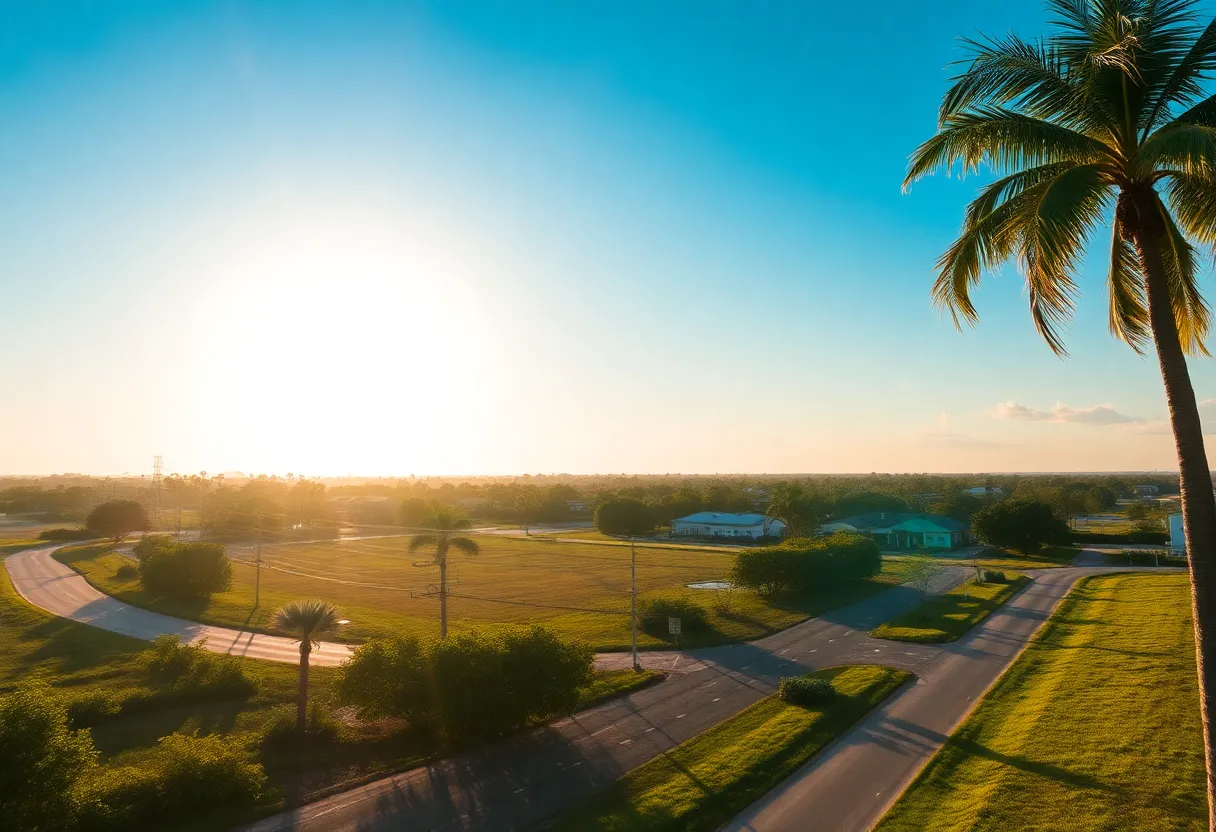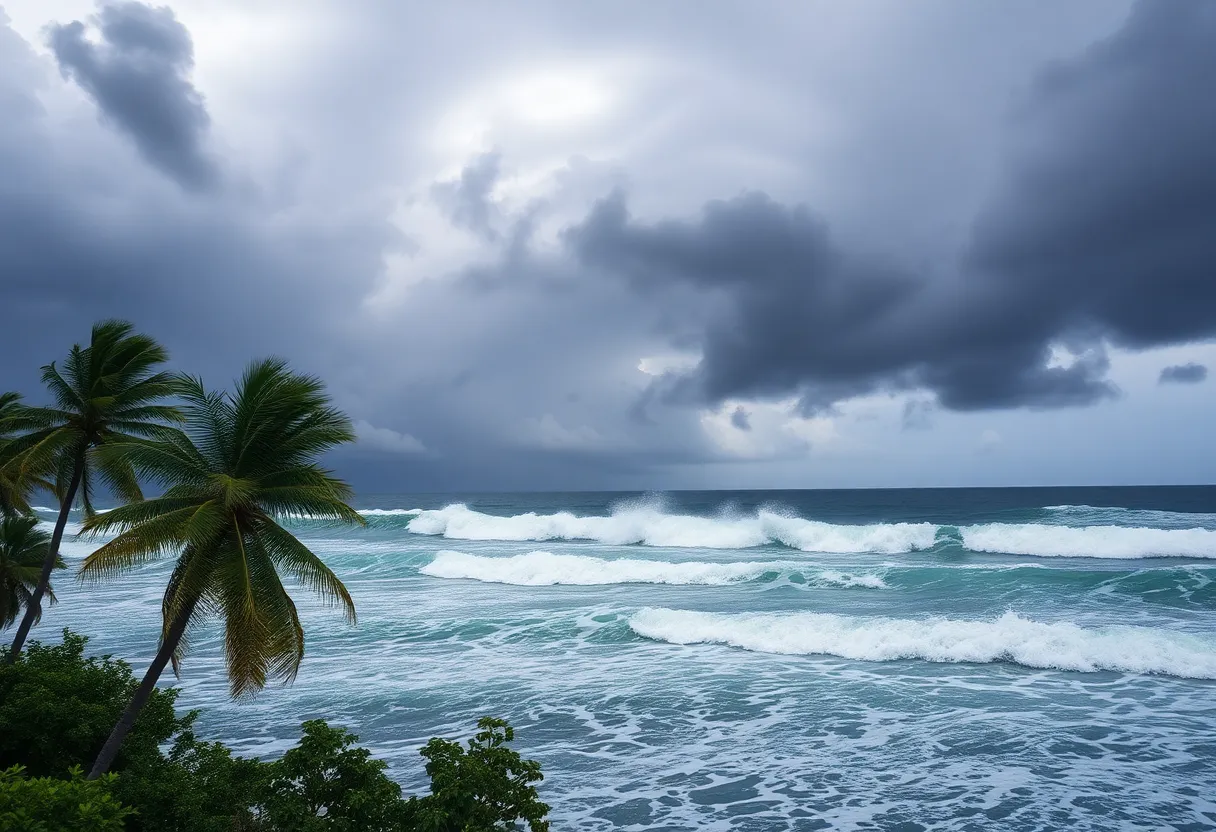News Summary
Central Florida is experiencing a significant heat wave, with temperatures reaching 95 degrees Fahrenheit. Public health officials are warning residents about the health risks associated with high heat and poor air quality, influenced by Saharan dust. Residents are advised to stay hydrated and be cautious when outdoors. The forecast indicates a rise in rain chances throughout the week, potentially bringing some relief from the extreme heat wave. Health and safety recommendations are emphasized to mitigate risks during this challenging weather period.
Central Florida Faces Extreme Heat Wave with High Temperatures and Air Quality Concerns
Central Florida is bracing for a significant heat wave, with temperatures projected to hit 95 degrees Fahrenheit on Monday, June 9, 2025. This forecast exceeds the typical high of 91 degrees for early June, raising concerns about health risks related to elevated temperatures.
By the afternoon, the heat index is expected to soar into the low 100s, particularly in areas like Ocala and Sanford, where it may feel as hot as 102 degrees. With such high temperatures, it is essential for residents, especially those sensitive to heat, to take precautions. Public health officials recommend staying hydrated and taking breaks to mitigate the risks associated with extreme heat.
Current Weather Conditions
Over the past weekend, temperatures in Central Florida have already felt like the low 100s, creating a sustained period of high heat. Adding to the challenges, Saharan dust is lingering in the atmosphere, impacting air quality across the region. Although the concentration of dust has started to thin out, air quality in many parts of Central Florida remains categorized as moderate. Residents who are particularly sensitive to respiratory issues are advised to exercise caution when spending time outdoors.
Similar phenomena associated with the Saharan dust are occurring throughout much of the Southeast U.S., causing health officials to monitor air quality closely. Conditions are forecasted to improve gradually, but residual effects may persist for individuals vulnerable to changes in air quality.
Outlook for the Week Ahead
The second week of the hurricane season is beginning with a noticeable calm, as no significant developments are expected from a tropical wave currently in the central Atlantic. However, rain chances for the Orlando area are projected to rise throughout the week. Starting at 40% on Monday afternoon, the probability of rain will increase to 50% on Tuesday and reach 60% by Wednesday. Most of these storms are anticipated to be driven by typical sea breezes characteristic of this time of year.
As rain chances climb, forecasted temperatures are also set to experience a slight decrease. Daily high temperatures are expected to drop somewhat, and overnight lows will settle in the mid-70s, providing some relief from the stifling heat.
Health and Safety Recommendations
Health officials also emphasize the critical need to avoid leaving children or pets in parked vehicles, where temperatures can rise rapidly, increasing the risk of heat-related illnesses. Residents are encouraged to monitor the heat index and take appropriate actions to safeguard their health and the health of vulnerable individuals.
Conclusion
As Central Florida navigates through this intense heat wave along with air quality concerns, residents are reminded to prioritize safety and health measures. By staying informed and taking necessary precautions, it is possible to manage the challenges posed by these extreme weather conditions.
Deeper Dive: News & Info About This Topic
- Click Orlando
- Wikipedia: Heat Wave
- Herald Tribune
- Google Search: Florida heat wave 2025
- PNJ
- Google Scholar: Heat Waves Health Effects
- Fox 35 Orlando
- Encyclopedia Britannica: Heat
- WPTV
- Google News: Florida Weather Forecast

Author: STAFF HERE PETERSBURG WRITER
The ST PETERSBURG STAFF WRITER represents the experienced team at HEREStPetersburg.com, your go-to source for actionable local news and information in St Petersburg, Pinellas County, and beyond. Specializing in "news you can use," we cover essential topics like product reviews for personal and business needs, local business directories, politics, real estate trends, neighborhood insights, and state news affecting the area—with deep expertise drawn from years of dedicated reporting and strong community input, including local press releases and business updates. We deliver top reporting on high-value events such as Grand Prix of St. Petersburg, Localtopia, and SHINE Mural Festival. Our coverage extends to key organizations like the St. Petersburg Area Chamber of Commerce and St. Pete Downtown Partnership, plus leading businesses in finance, manufacturing, and healthcare that power the local economy such as Raymond James Financial, Jabil, and Bayfront Health St. Petersburg. As part of the broader HERE network, including HEREJacksonville.com, HEREOrlando.com, HERETallahassee.com, and HERETampa.com, we provide comprehensive, credible insights into Florida's dynamic landscape.





